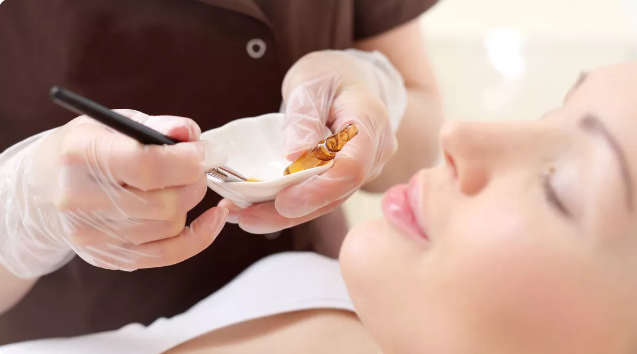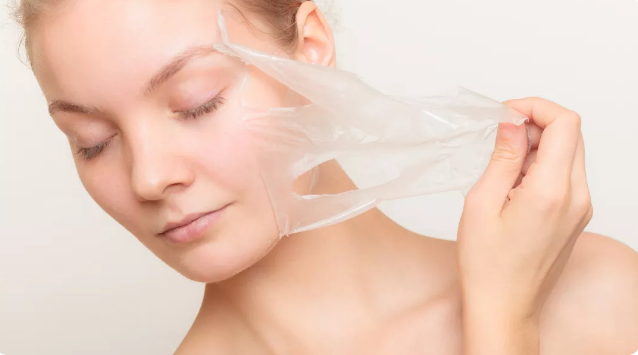Hello everyone, I am Yuan Chao, a dermatologist who has obtained a doctor of dermatology from France. I have been guarding everyone’s face ~
In the clinic these days, there was a little sister who asked me when she entered:
Doctor, I often brush acid at home, and your hospital also has brush acid?
I asked her that she was brushing what acid, and as a result she said that she was brushing hyaluronic acid!
As a result, I can only keep an awkward and polite smile. In fact, there are many demon words in skin care, such as [brush acid]…
Familiar girls often smile, and unfamiliar girls will look confused.
Today, Dr. Yuan, the guardian of your skin, will talk to you about [brush acid].

What is [Brush Acid]?
First of all, it is not something with sour words in the name, smearing it on the face is considered sour!
For example, hyaluronic acid, ascorbic acid and kojic acid are not what we usually call brush acid.
Brush acid refers to a chemical skin rejuvenation method. Commonly used acids include tretinoin or its derivatives tretinoin, tartaric acid, salicylic acid and amygdaloic acid.
What is the significance of brushing acid?
Our skin has a routine metabolic cycle of 28 days, but with skin aging, environmental influence or irregular work and rest, skin metabolic cycle disorder may be caused.
A brush of acid is like a reopening of the skin metabolic cycle.
Brush well, it will dissolve the old stratum corneum before, and can start the self-renewal of the skin, so that the skin can reach a new steady state ~
What are the kinds of brush acid?
Broadly speaking, it can be divided into skin care brush acid and medical brush acid.
Brush acid for skin care products: By smearing skin care products containing low concentration of fruit acid or salicylic acid, the effects of exfoliating, improving skin darkness and brightening skin color can be achieved.
At present, many whitening and skin care products will be compounded with acid agents to increase their efficacy.
Medical brush acid: In professional medical institutions, technicians who have received professional training use high concentration tartaric acid or salicylic acid or composite acid to peel to different skin depths to promote collagen regeneration and achieve reshaping effect, also known as chemical skin rejuvenation.

Suitable for sour skin
The following skin conditions can be brushed with acid:
- Skin aging, such as dark, large pores acne skin, many silent acne, or blackhead acne pockmark skin, many inflammatory pigmentation chloasma rose acne, combined with seborrheic dermatitis (need to choose as appropriate) perihairy keratosis
Several commonly used acids
Retinoic acid: Low concentration is very effective,
Low concentration tretinoin can accelerate the stripping of stratum corneum and can be directly used for acne treatment.
However, this ointment must be used under the guidance of a doctor, and the specific application method and dosage also need to be clear. Never don’t treat your face as your face, which will only cause more trouble if you irritate redness and swelling.
High concentration (1 ~ 5%) tretinoin is used as stripping agent, which is rarely used in the medical and beauty industry.
Fruit acid: superficial exfoliation represents
The water-soluble acid comprises glycolic acid (20-75%), lactic acid (10-50%), malic acid and citric acid.
The cutin can be removed by releasing the connection between keratinocytes, making the skin soft and promoting melanin discharge, further achieving the effects of brightening skin color and removing darkness.
Medical brush acid generally starts from 20% and gradually increases according to the patient’s skin tolerance, reaching 75%.
The addition concentration in skin care products is generally between 0.2 and 2%, and the lower the pH value in the product environment, the more obvious the effect is.
In national laws and regulations, the pH value in fruit acid products needs to be greater than 3.5 to reduce the irritation of fruit acid to skin.
Salicylic Acid: Love of Big Oil Skin
Salicylic acid comes from willow bark and is now a famous ingredient ~
In most cases, it is suitable for all skin types, but it is more popular with oily skin.
Salicylic acid has two-way regulation effect on cuticle of skin and has certain anti-inflammatory effect.
At present, salicylic acid has become the leading role in many skin care products and has played a lot of roles. However, the low concentration of 2% is still used in skin care products, and about 30% of medical-grade salicylic acid will be used.
Complex acid: 1 + 1 > 2
20% glycolic acid and 10% salicylic acid were compounded to form a complex acid.
Compound acid can synthesize two acids with different action mechanisms, strengthen synergy, promote penetration, improve curative effect and reduce adverse reactions.
The complex acid has the advantages of both acids and can avoid their respective risks.
Small Tips with Acid Brush
Preparation before Brushing
Complete skin barrier is an important prerequisite for routine acid brushing. If your skin is especially red and swollen and inflammatory, treat it with caution.
Therefore, it is still necessary to consult a professional dermatologist first on the matter of acid brushing. Don’t brush it if you want. Many cases of acid brushing are caused by insufficient preparation.
After brushing skin care
Wash your face with warm water that night, use mild facial cleanser the next day, and do not use exfoliating cleaning products or other facial cleansing instruments for a week. Moisturizing needs to be more fully in place!
Brush acid is cuticle stripping, desquamation is common, so more application of moisturizing cream is the best solution to overcome dry desquamation. Other functional skin care products, especially whitening products, need to reduce superposition in the near future.
Sun protection should be stricter! Try to reduce the probability of going out, physical shielding is in place, and physical sunscreen is selected for sunscreen.
Acid brushing frequency
Acne skin is best brushed once every 2-3 weeks, pigmented skin can be brushed once every 3-4 weeks, 5-6 times a course of treatment.
Those who have just done skin photoelectric therapy do not recommend brushing acid immediately, and wait at least 4 ~ 6 weeks before doing it.
